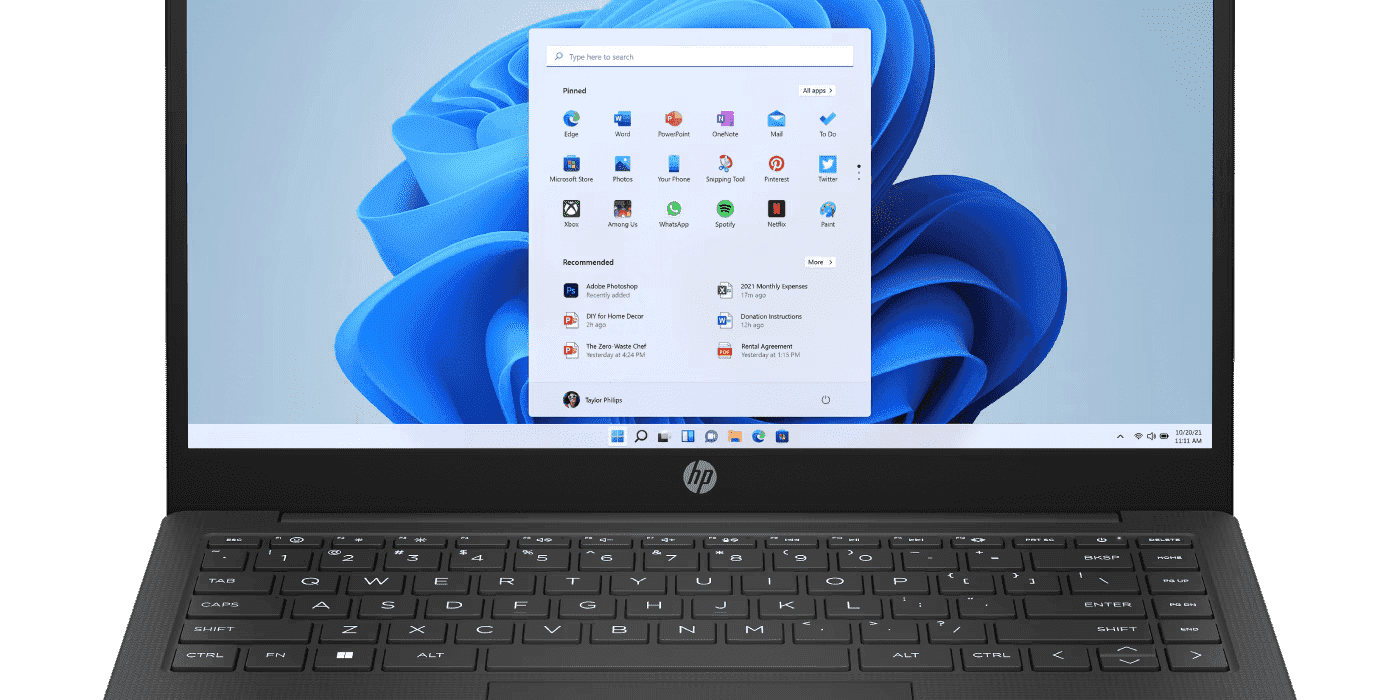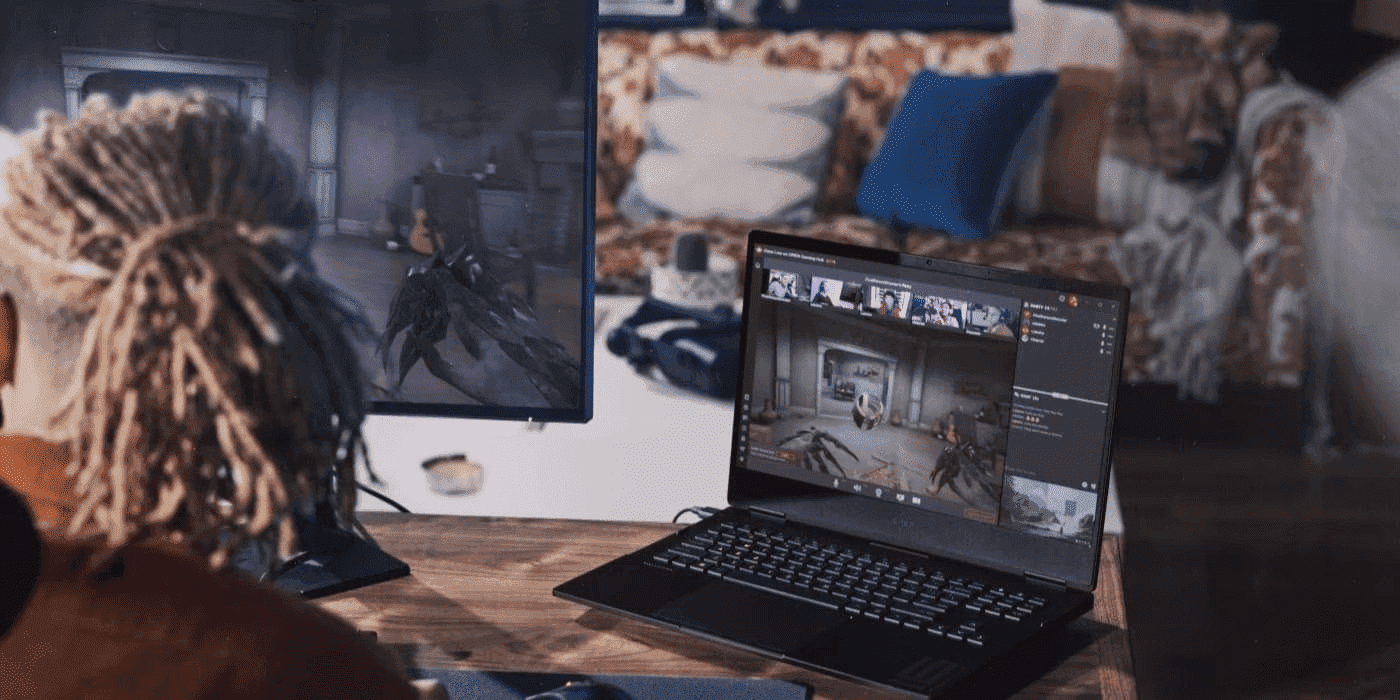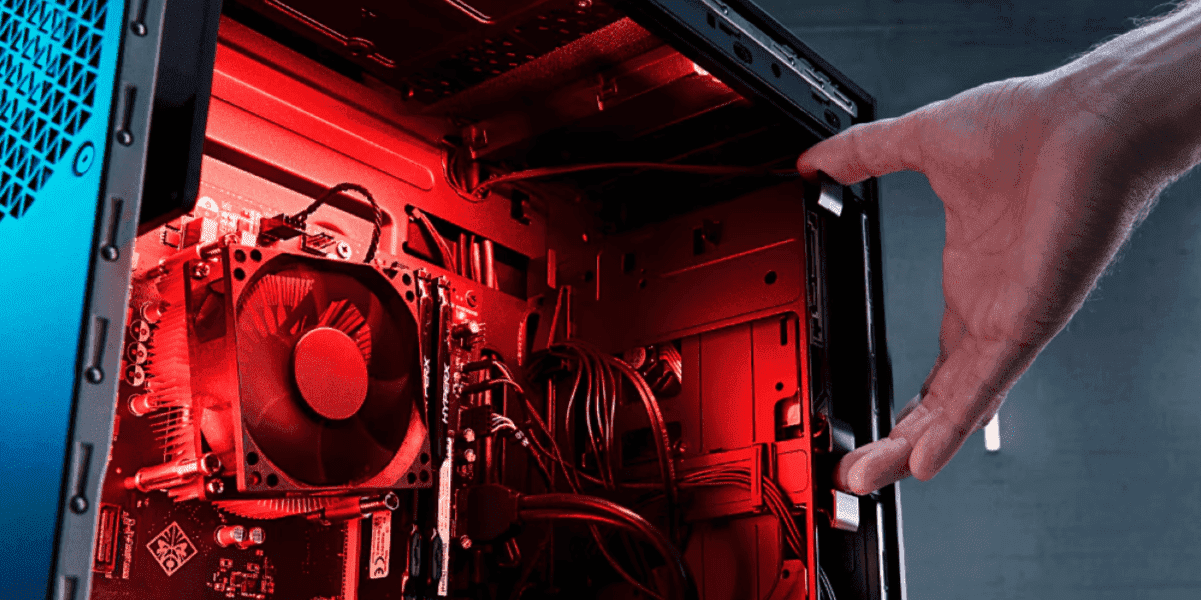Thank you for visiting the NEW ZEALAND HP Store
-
Contact Us
CONTACT USCall us
- Sales
- 0800 854 848
- Technical support
- +64 9884 8600
Mon-Fri 9.00am - 6.00pm
(exc. Public Holidays)
Chat with us- Our specialist are here to help
- Live chat
Mon-Fri 9.00am - 6.00pm
(exc. Public Holidays)
Submit feedback We value your opinion! - My Account
GPU Buying Guide: How To Choose the Right Graphics Card


An underpowered GPU will impact performance and lead to a lackluster visual experience for gaming, photo and video editing, and other visual tasks. If you don’t know where to start, our graphics card buying guide will help you make the right decisions when it comes to choosing your next graphics card and taking control of the graphics performance on your PC.
Along with a computer's central processing unit (CPU), the graphics processing unit (GPU) has the most significant effect on your computer’s performance. This is because the GPU processes data from the CPU and renders it visually on your display. However, it can be confusing to know all the details that come with knowing when to upgrade your GPU, and selecting the right graphics card for your needs.
Why you should upgrade your graphics card
More than any other component in a PC, the GPU is responsible for the quality of the graphics, or visual elements, that appear on your display. In the early days, CPUs were responsible both for processing and rendering graphics, but these days, virtually every PC on the market includes a graphics card of some kind.
AGE
As graphics cards age, they become less capable of keeping up with the latest games, streaming, and software. While they don't actually degrade, a 5-year-old graphics card may not be able to handle the latest video editing software or stream 4K video without stuttering. It may also struggle to showcase a brand-new video game in the way you want.
USE
When you set out to upgrade your graphics card, you should really think about how you use your PC. For example, if you mostly use your PC for gaming, and newer games fail to run at a consistent 60 frames per second (fps), then this is a good sign that you’re due for an upgrade.
POTENTIAL BOTTLENECKS
Make sure that your GPU is not bottlenecking your CPU. This occurs when your CPU is cranking out more fps than your GPU can handle, which can lead to stuttering on your display. If this scenario impacts the performance of your PC, then you most likely need to upgrade your graphics card.
What to look for in a graphics card
When looking for graphics cards, there are two main brands you'll choose from; AMD and NVIDIA. Both manufacturers offer high-powered, quality graphics cards.
• First, you need to decide on the amount of memory you want in your graphics card
• Also consider factors such as the form factor of your PC (desktop vs laptop),
• Do you want a discrete GPU or graphics card integrated into the CPU
• Take into consideration what power connectors your card uses
• Take note of its thermal design power (TDP)
All of these will determine whether the graphics card will fit directly in your PC and if it can receive adequate power and cooling. For an overview of the best budget GPUs, check out our HP Tech Takes article here.
1. INTEGRATED VS. DISCRETE GRAPHICS
Integrated graphics are more common in smaller form factor systems such as laptops, but you’ll find them in desktop PCs as well for those who don’t need to run high powered visual software.
Integrated graphics may not have independent RAM, but they also don't generate as much heat or use as much power and battery life as their discrete counterparts. Integrated graphics are generally not preferred for graphic-intense gaming, but they are more budget-friendly. They’re also fine for more basic visual tasks, like streaming movies and TV.
If you’re interested in using your PC for graphic-intensive tasks such as gaming at high settings, video editing, photo editing, and 3D rendering, then you need to invest in a discrete graphics card.
These cards do have their own RAM, unlike their integrated cousins. However, a discrete graphics card needs a good CPU to match, as well as a cooling setup to keep your PC from overheating. It will also eat up more power, so you’ll need a bigger (and more expensive) power supply in your desktop PC to run both processors.
It also means that if you have a discrete card in your laptop, you’ll be faced with a shorter battery life compared to less-powerful options.
2. DESKTOP VS. LAPTOP GRAPHICS CARDS
Both desktop and laptop graphics cards have separate considerations. Because of the types of devices these graphics cards are built for, there are differences between the form factor, performance, and price of desktop vs laptop graphics cards.
Desktop PC graphics card
• Form factor: The ability to fit larger, more powerful components are one benefit of using a PC tower. The PC tower provides the space and cooling necessary to accommodate the heat and power draw of robust GPUs.
• Performance: You’ll enjoy higher specs compared to laptop graphics cards. This includes more memory bandwidth, higher pixel rate, and increased texture mapping than laptop graphics cards.
• Price: Desktop PC cards are more affordable because the hardware is less compact and therefore less costly to manufacture.
Laptop graphics card
• Form factor: Smaller components are necessary because your GPU needs to fit inside the thin chassis of a laptop. As a result, they are optimized for power usage and benefit from advanced thermal and electrical technology. They are also designed to run as quietly as possible.
• Performance: Manufacturers are getting closer to parity between desktop and laptop GPUs, but as we pointed out earlier, laptop cards do tend to underperform in certain areas.
• Price: You’ll pay a premium for laptop graphics cards. This is because the components to make a graphics card that is portable and power-efficient are more expensive to produce. There are bigger and higher-performing laptop graphics cards available, but they also add to the device’s overall weight, can make your laptop run hot, and may hinder portability.
3. RAY-TRACING
Ray-tracing is one of the exciting recent technologies found in newer graphics cards. Generally used in gaming, ray-tracing is a rendering technique that produces extremely realistic lighting effects. This is done through an algorithm, which traces a path of light and then attempts to simulate the way that light interacts with objects in the real world.
Games like Cyberpunk 2077, Watch Dogs Legion, and Control make extensive use of ray-tracing, which mimics the way that the human eye processes light reflection and shadows. Ray-tracing represents one of the biggest leaps in graphics in years, and it’s something both NVIDIA and AMD are improving upon in their newer GPUs.
Ray-tracing technology has not yet reached its full potential, but game developers are embracing it wholeheartedly. While the technology has been used by film studios for years, especially in big-budget action films, it’s more difficult to render this in real-time in your PC game. In the past, game companies have used a process called rasterization, which translates 3D polygonal models into a 2D image and pre-renders light effects.
With the beginnings of ray-tracing, you can still expect some impressive performance from modern graphics cards. That goes for everything from huge explosions in a firefight, down to the sun’s rays peeking through a window in a dimly lit room.
4. GRAPHICS CARD MEMORY: HOW MUCH IS ENOUGH?
When rendering graphics, your GPU performs a huge number of calculations per second. This happens whenever the image changes on your screen, even in something as simple as moving your mouse. Because the GPU is responsible for rendering these outputs, it needs video RAM (vRAM) to do so.
When using an integrated graphics card, this memory is shared with the CPU, so a percentage of the total available memory is used when performing graphic tasks. However, a discrete graphics card has its own memory, which the card uses to render details.
In general, the more memory a GPU has, the more detail it can process, but this does not directly impact its performance. For general use, a GPU with 2GB is more than adequate, but gamers and creative pros should aim for at least 4GB of GPU RAM.
The amount of memory you need in a graphics card ultimately depends on what resolution you want to run games, as well as the games themselves. More modern games, such as Cyberpunk 2077 and Control, require at least 6GB of RAM to run at 1080p resolution, and may require more than 8GB of memory to run at 4K resolution with high texture detail and full ray-tracing features.
Creative pros who render 4K video or run visually intensive programs will benefit from the same GPUs as gamers.
5. WHAT THE MODEL NUMBERS MEAN
AMD and NVIDIA are currently the two major manufacturers of GPUs on the market. In fact, NVIDIA actually popularized the term GPU in 1999, though it had been in use for at least a decade prior. Both companies have made huge strides in GPU technology.
AMD cards
The newest series of AMD processors use the RX branding.
• RX Vega: Higher-tier GPU
• RX: Entry-level and mid-tier GPU
You can tell which GPU is more recently released by looking at the RX number. If it’s higher, the model is newer. We’ll call your attention to that again: For AMD GPUs, a higher number does not equate to more power. Rather, it indicates how recently it was released.
After the number, some models will have additional letter(s).
• XT Graphics: Slightly improved version of an existing, similarly named GPU.
• HD: Older series currently being phased out.
• R: Also an older series in the process of being phased out.
NVIDIA cards
NVIDIA uses a different categorization system to identify its products. You’ll start with the letter designation. An NVIDIA GT graphics card is built for standard use, while a GTX graphics card is built for high-end gaming.
• RTX: Highest-level gaming GPU
• GTX: Gaming-specific, from entry-level to higher-end
• GT: Basic, entry-level discrete GPUs
Numbered series: This indicates how new the GPU is. For example, the 30 series is newer than the 20 series. Just like AMD graphics cards, a higher series number indicates how new the graphics cards are in comparison to lower numbered GPUs in the series.
However, a GTX card always supersedes a GT regardless of the model number. NVIDIA also upped the performance ante even further with the RTX branding. Keep in mind, though, some of these are very expensive and in limited supply at publication time, particularly the 30-series cards.
The ending letter designation indicates special functionality.
• Ti: Indicates it will perform better than a similarly named GPU. For example, the GeForce GTX 1660 Ti outperforms the GeForce RTX 1660.
• Super: Slightly improved version of an existing GPU (similar to Ti designation).
• M: No longer in use, but previously indicated a “mobile” or laptop GPU.
Both AMD and NVIDIA make graphics cards for both desktop and laptop use. Laptop graphics cards used to be labeled with an 'M' to indicate that it is a mobile GPU. Most modern graphics cards from both companies have dropped the mobile branding, especially as they work to bridge the gap between laptop GPUs and desktop GPUs.
6. PRICING AND RECOMMENDATIONS TO KEEP IN MIND
Both AMD and NVIDIA manufacture great graphics cards both for general use and gaming. The power of the GPU tends to be reflected in the price, so it is not necessary to buy a graphics card geared toward gaming if you are not interested in running games at the highest settings and want to get the best performance per dollar possible.
For a general purpose graphics card, we recommend the AMD Radeon™ RX 5600 XT and the NVIDIA GeForce® GTX 1660 Ti. For a gaming-focused graphics card, you can still get by with those two cards, but you may want to consider upgrading to the AMD Radeon RX 6800 XT and one of NVIDIA’s 20-series GeForce RTX cards.
While there are more powerful graphics cards on the market, these should give you sufficient visual power for running games at the recommended settings, even with full ray-tracing in some cases.
7. HP PCS AND LAPTOPS TO CONSIDER
At HP®, we have a number of desktop PCs and laptops outfitted with the best GPUs available on the market. If you find that you need to upgrade other components when you designate your GPU, you could do it all at once with our customizable shopping options.
Desktop PC recommendations:


Gaming: Customize your ultimate gaming machine with the HP OMEN selection, which includes the jaw-dropping 20 and 30 series NVIDIA cards. For gamers on a budget, consider the HP Pavilion gaming desktop and pick from your choice of AMD or NVIDIA graphics card.
Design: You can customize the HP Z4 G4 workstation to include your choice of AMD or NVIDIA graphics card, along with plenty of RAM and processing power.
Laptop recommendations:


Gaming: Take your pick from the HP OMEN gaming laptop lineup. It has some of the latest GPU upgrades available today, as well as the RAM and processing power you need to play the biggest and best games. For a more mid-tier option, the HP ENVY 15t is definitely worth a look and includes the NVIDIA GeForce GTX 1650 Ti.
Design: The HP ENVY 15 is a powerful laptop that boasts the NVIDIA GeForce RTX 2060. The HP ZBook workstation series is full of great options as well, and you can find your choice of AMD or NVIDIA card.
Summary
Choosing a graphics card is one of the most difficult parts of buying a new PC, primarily because it’s one of the most important components, so you want to get it right. Plus, there’s a lot of terminology to unpack if you’re new to GPUs.
In general, you should upgrade your graphics card every 4 to 5 years, though an extremely high-end GPU could last you a bit longer. While price is a major consideration in your decision, also consider the performance and memory you need. And keep your computer’s CPU in mind, because it may need an upgrade, too. After all, the best GPU is only as effective as its accompanying CPU.
- Sales
- 0800 854 848
- Technical support
- +64 9884 8600
Mon-Fri 9.00am - 6.00pm
(exc. Public Holidays)
- Our specialist are here to help
- Live chat
Mon-Fri 9.00am - 6.00pm
(exc. Public Holidays)








